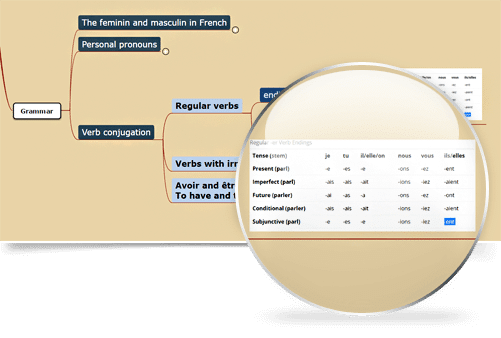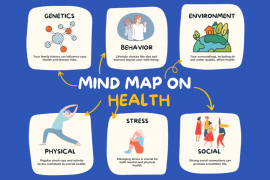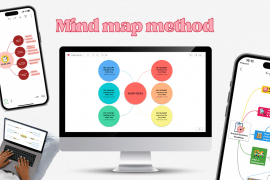Why learn a foreign language?
Besides the fact that it comes in handy when traveling or perhaps it can help with your future job, studies found that learning a foreign language actually makes you smarter. How you may ask. Well, it actually improves your memory, you become more perceptive. For many of us learning a foreign language can be difficult. We don’t have the same sense for languages and different languages require a different amount of time to be learned.
How To No. 1 – Pronunciation
The first step to take when learning a language is to learn how to spell its sounds and pronounce its words. And we have just the right mind mapping software to help you with this. What you need to do is create a mind map with a main topic on pronunciation. Use the Notes feature from the left side toolbar to write down the basic pronunciation rules. You can also add videos where these rules are explained with images and have pronunciation examples.
Now that you have the rules written as well as explained, you can start pronouncing stuff. After you listened carefully to the target language’s sounds, try to reproduce them. To keep track of your progress, record yourself from time to time.

How To No. 2 – Vocabulary
Learn the most common and essential words. You might think of all the basic words which you use in everyday life: colors, emotions, weather, conditions, food, animals, etc.. It’s a known fact that our memory works better if we use pictures, this is because we force our brain to find a connection between an unknown word and a picture that is familiar to us. So add web images to your mind map and put them besides the words. At this point the impact is twofold: you will reinforce the sound and also start to think in that language. A tip to improve your thinking in a foreign language is to search for images using the foreign words. This way even the spelling will be printed in your mind. If you have pronunciation problems, you can always revise the rules from step one. That’s why mind maps are so great, you have everything on one page and it’s very easy to toggle between the steps.

How To No. 3 – Grammar
Thirdly, you have to start to learn the grammar. You already have a basic vocabulary, you already know how to pronounce the words, now it’s time to make little stories to practice your grammar.Search for images, videos, and even take your own notes and voice notes. Studies found that in the process of remembering, the most important thing is the personal connection. Now, if you start creating little stories imagining yourself, your needs or telling a story that happened to you in the past, it will help keeping the words/conjugations in mind and most likely you will be able to recall them on the long term.

What happens after you take these simple steps? You get ready to speak with the natives. Find a partner with which you can practice on a daily basis. Travel to any destination where the language is frequently used and test your new language skills.
You can never stop enhancing your vocabulary so if you’re done with the basics, try to deepen your knowledge on specific branches: academic vocabulary, food vocabulary, travel vocabulary, etc..
Good luck! Buona Fortuna! Bonne chance! 🙂
Keep it smart, simple, and creative!
The Mindomo Team







2 Comments
A feature I’d love in Mindomo is “search in content” of all my mindomo files.
Currently it’s only possible withing a given document. If you look at Google drive or Mindmeister you can search in content of all files from the general search box.
This feature is essential for me as I plan to use mapping more. Do you plan to enable this and if so at which horizon?
Thanks!
Hello, Francois. We are planning to release a ‘search in all content’ functionality by the end of November.